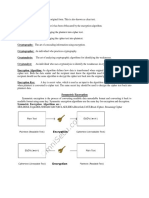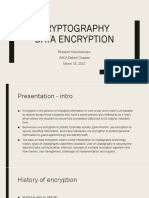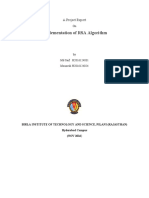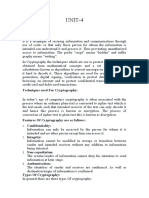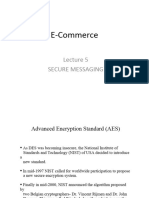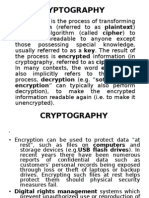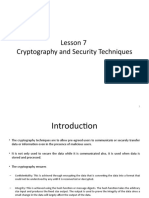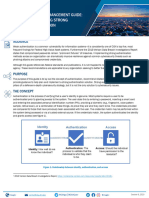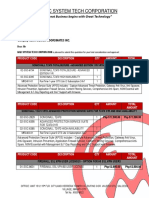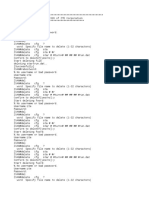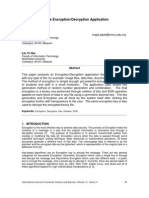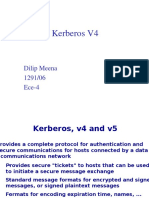0% found this document useful (0 votes)
59 views30 pagesChapter 2
The document discusses cryptography concepts including symmetric and asymmetric key cryptography, cryptographic algorithms like DES, RSA, and hashing functions. Symmetric key cryptography uses the same key for encryption and decryption while asymmetric key cryptography uses public and private key pairs. DES is a symmetric block cipher that encrypts data in 64-bit blocks using a 56-bit key. RSA is an asymmetric algorithm that uses public and private key pairs based on large prime numbers to encrypt and decrypt messages. Hashing functions create a fixed-size output from variable input to verify data integrity.
Uploaded by
Mysto GanCopyright
© © All Rights Reserved
We take content rights seriously. If you suspect this is your content, claim it here.
Available Formats
Download as PDF, TXT or read online on Scribd
0% found this document useful (0 votes)
59 views30 pagesChapter 2
The document discusses cryptography concepts including symmetric and asymmetric key cryptography, cryptographic algorithms like DES, RSA, and hashing functions. Symmetric key cryptography uses the same key for encryption and decryption while asymmetric key cryptography uses public and private key pairs. DES is a symmetric block cipher that encrypts data in 64-bit blocks using a 56-bit key. RSA is an asymmetric algorithm that uses public and private key pairs based on large prime numbers to encrypt and decrypt messages. Hashing functions create a fixed-size output from variable input to verify data integrity.
Uploaded by
Mysto GanCopyright
© © All Rights Reserved
We take content rights seriously. If you suspect this is your content, claim it here.
Available Formats
Download as PDF, TXT or read online on Scribd
/ 30


















